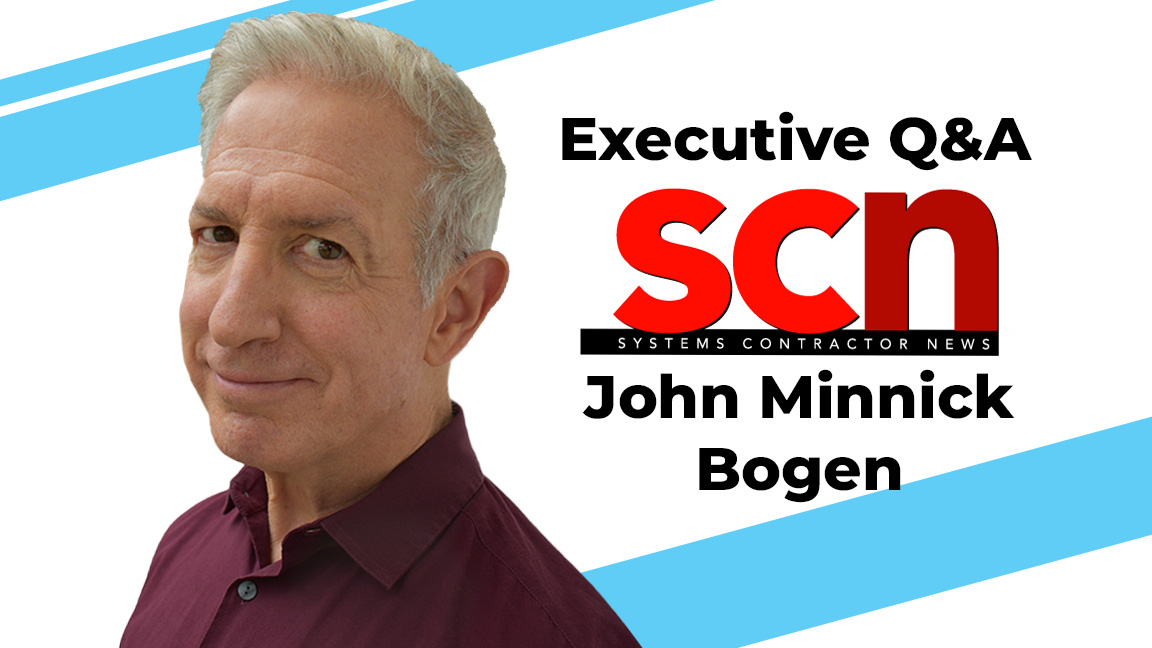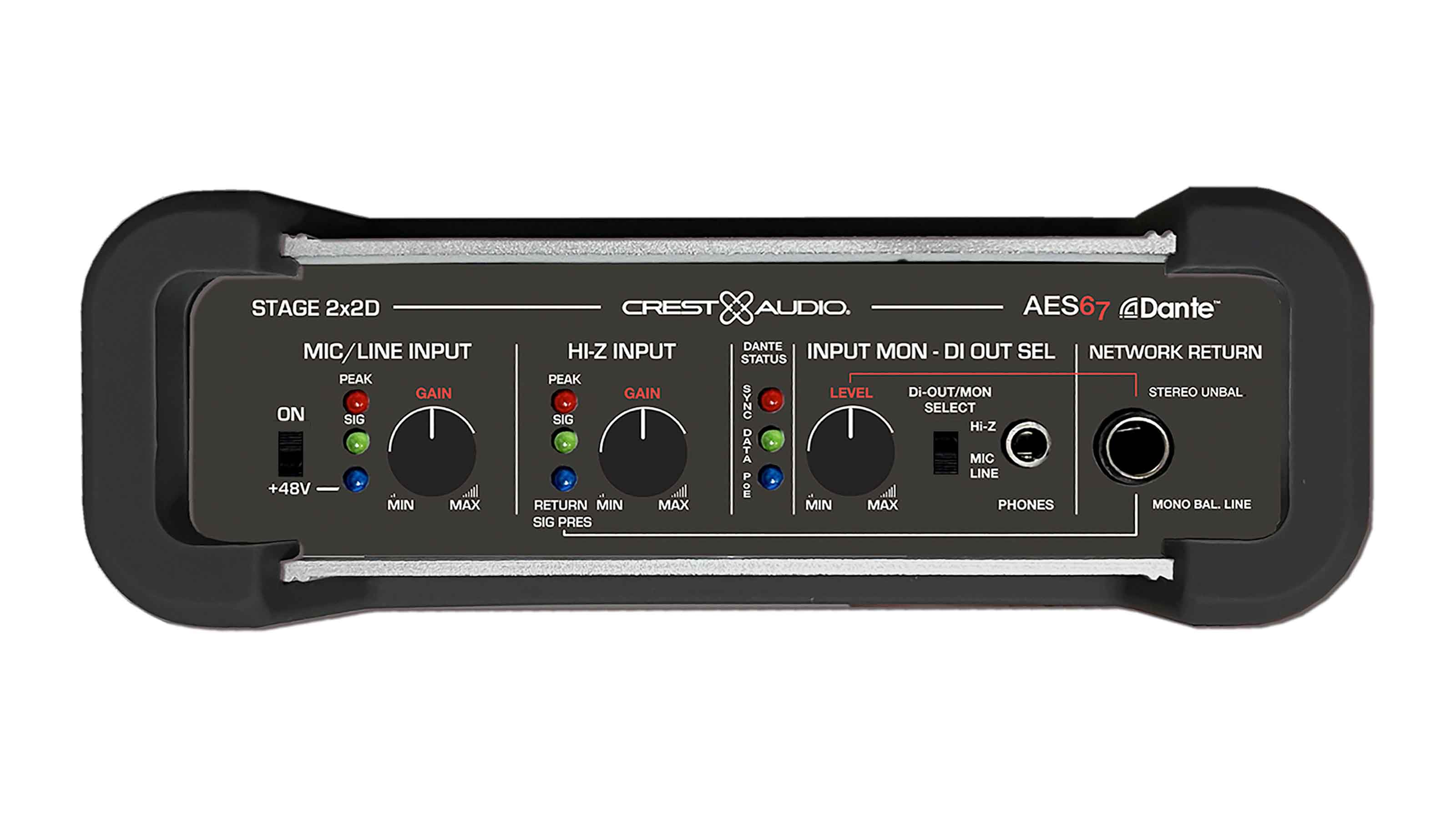Executive Q&A: Built on Reliability
Bogen VP of engineering John Minnick explains how the company has continued its long legacy with IP-based audio solutions.

SCN: How long have you been with Bogen, and what are your responsibilities?

John Minnick: I joined Bogen 11 years ago as VP of engineering. We assembled a new engineering team with the vision of evolving Bogen’s intercom, paging, and public address solutions to be software-centric and deployed on industry standard IP networks. Moving to this new architecture allows the team to develop new features and enhancements quickly, and offers our integrators a highly scalable and easy to deploy solution.
CN: Bogen has been around since 1932—what’s the secret to your company’s success?
JM: Bogen has always been perceived as a very reliable brand by integrators, so we strive to protect that image. The company has been working hard over the past eight years to establish itself as a technology leader in the core markets that it has long served.
[Executive Q&A: Talking Points]
SCN: What new or upgraded features are available through IP-based paging systems?
JM: This is a broad question—we’ve added literally hundreds of new functions and capabilities through the Nyquist software solution with continuous improvements and features in every annual software release. A few prime examples include the scalability of the solution. The ability to scale provides huge opportunities for our integrators and assurance to end users that what they have today will not be obsolete tomorrow. Secondly is the ability to do third-party integrations through the software API. This has allowed Bogen to expand into valuable technology partner opportunities that expand the Bogen Nyquist capabilities to include things like weapons detection, earthquake early warning, enhanced AI threat detection, and more.
A daily selection of the top stories for AV integrators, resellers and consultants. Sign up below.

SCN: So, in educational environments, what’s more popular these days, analog or IP-based paging systems?
JM: For Bogen, the growth in the IP-based paging Nyquist solution opportunities has significantly outpaced the growth of legacy systems.
SCN: Apart from the content, of course, how do school paging systems differ from systems used in other markets?
JM: The largest application difference between the two is the sheer amount of intercom calls required in schools versus the other markets. Background music solutions can and are used in both education and commercial applications.
[Viewpoint: An Invitation for Collaboration]
SCN: How well has your new Combo LED Display Wall Baffle Speaker been received, and what markets are most interested?
JM: Since it just recently launched, it’s still a little too early to tell, but the initial requests have been primarily in schools and in districts in the NYC and West Coast regions. Many other institutions have had a lot of success using the Bogen Nyquist video appliance, the NQ-GA10PV.
SCN: Bogen offers a variety of horn loudspeakers. Why select a horn—what advantages do they offer over other speakers?
JM: Horns work great in difficult acoustic and outdoor environments for paging and public address. They can project long distances and over wide angles.
SCN: You introduced a sound masking solution last year. How important is sound masking in today’s corporate environment?
The ability to scale provides huge opportunities for our integrators and assurance to end users that what they have today will not be obsolete tomorrow.
JM: Sound masking continues to be very important for a lot of corporations and institutions to reduce distractions and provide conversational privacy. Bogen’s solution is a software-licensable option that can be added to any Nyquist C4000 or E7000 application. We don’t offer sound masking as a standalone feature. Bogen’s intent was to offer a well-integrated feature enhancement to the Nyquist paging, public address, and intercom solution. It is a very rich sound masking solution intended to provide quality results for the end users.
SCN: What makes audio design for houses of worship so challenging?
JM: Primarily the acoustic environment integrators have to work with, especially in older houses of worship, which have an architectural design that was created before the existence of public address systems.
[On Your Business: Sales Is Not a Four-Letter Word]
SCN: What new initiatives are we likely to see from your company in the near future?
JM: You’ll have to keep your eyes peeled! In all seriousness, Bogen does not telegraph this information too early. We do have some exciting new technology partners being added to our ecosystem in the next few months. And stay tuned for new product news early next year.
SCN: Where do you see the Pro AV industry heading?
JM: It is really a very exciting time for the AV industry overall. The accelerated pace of the fundamental technologies that enable AV creation, distribution, and consumption has never been at the level it is today. This will fuel growth in Pro AV at rates well beyond GDP for the next decade for sure.

Mark J. Pescatore, Ph.D., has been the content director of Systems Contractor News since 2021. During his career, he's hosted and programmed two ongoing regional industry trade shows (including Future B2B's AV/IT Summit), produced and hosted podcasts and webinars focused on the professional video marketplace, taught more than a dozen college communication courses, co-authored the book Working with HDV, and co-edited two editions of The Guide to Digital Television.
